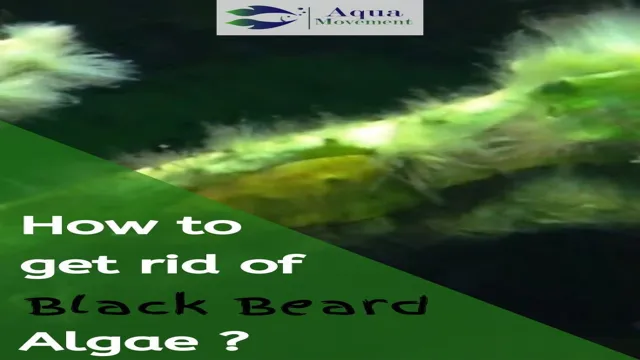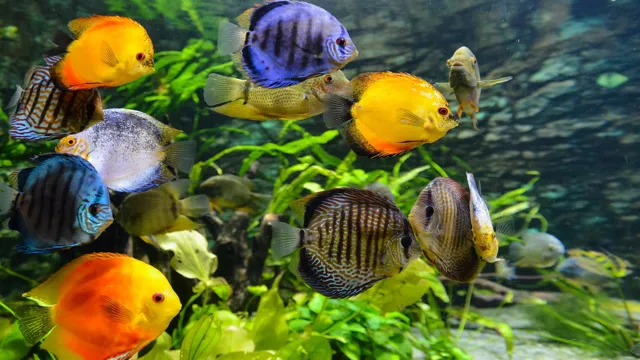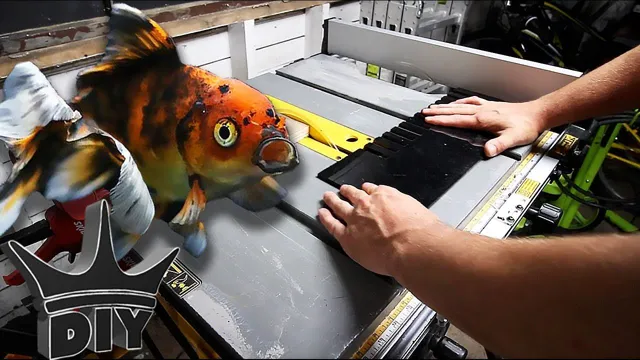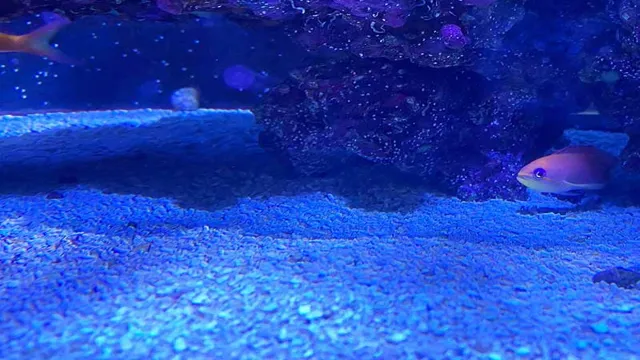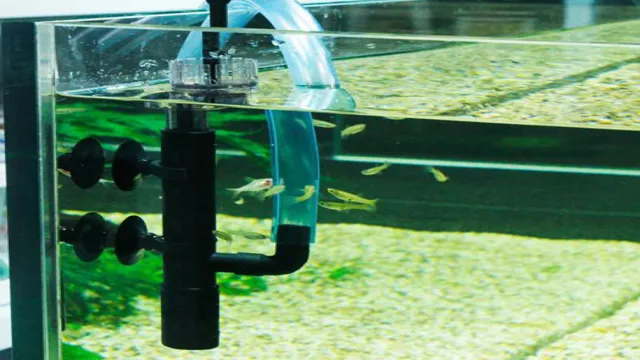Are you tired of unsightly black brush algae taking over your aquarium? Don’t worry, you’re not alone. Many aquarium owners struggle with removing this stubborn algae that can quickly become an eyesore in an otherwise peaceful underwater world. But fear not! With the right knowledge and techniques, you can eliminate black brush algae and prevent it from coming back.
In this blog post, we’ll discuss what black brush algae is, what causes it, and most importantly, how to eliminate it from your aquarium for good. So, grab your cleaning supplies and let’s get started!
What is Black Brush Algae?
Black Brush Algae is a type of algae that can be found in aquariums. It is named after its appearance, which looks like black filaments that resemble brush bristles. This type of algae can quickly take over aquariums and can be quite stubborn to get rid of.
It often grows in areas with low flow or low light, such as corners and crevices. There are several approaches you can take to remove Black Brush Algae from your aquarium, including manually removing it, using chemicals or natural remedies, or implementing changes to your aquarium’s lighting, water chemistry, and circulation. All of these methods require patience and some trial and error, but with persistence, you can successfully get rid of Black Brush Algae and maintain a healthy, thriving aquarium.
Identification of Black Brush Algae
Black Brush Algae is a type of stubborn and persistent algae that can be found in aquariums. It is a hardy and fast-growing algae that can quickly take over your aquarium, making it unsightly and unappealing. This type of algae appears as a dark green or black bushy growth that resembles a wiry beard, hence the name Black Brush Algae.
It can attach itself to almost anything from plants, rocks, gravel, and even glass surfaces. Black Brush Algae is a tough algae to eradicate, and it requires a lot of effort and time to get rid of it completely. If you notice any Black Brush Algae in your aquarium, it is essential to identify it early and take the necessary steps to control its growth.

Causes of Black Brush Algae
Black Brush Algae, also known as BBA, is a stubborn type of algae that can be challenging to get rid of in an aquarium. This algae is typically black or dark brown in color and has a bushy appearance, hence its name. There are several causes of Black Brush Algae, including low levels of CO2, high phosphates, low nitrates, and insufficient water flow.
When these conditions are present in an aquarium, the algae can quickly take over and become difficult to control. It can also grow on a variety of surfaces, including plants, rocks, and glass. To prevent Black Brush Algae from taking hold in your aquarium, it’s essential to maintain adequate water quality by testing for phosphates and nitrates regularly.
Additionally, providing enough carbon dioxide and consistent water flow can help keep the algae at bay. If BBA does begin to grow in your aquarium, there are several methods for removing it, including manual removal and treatment with hydrogen peroxide.
Prevention Measures to Avoid Black Brush Algae in Aquariums
One of the most frustrating issues that aquarium owners face is black brush algae. Not only is it unsightly, but it can also be difficult to remove. Luckily, prevention measures can be taken to avoid infestations of black brush algae in the first place.
Firstly, maintaining water quality and ensuring proper lighting is essential. Excessive nutrients and low CO2 levels can encourage the growth of algae, so it’s important to conduct regular water changes and fertilization. Additionally, implementing a consistent cleaning routine, including regular algae scrubbing, will prevent buildup and keep the tank clean. (See Also: How to Make Homemade Fish Aquarium: A Step-by-Step Guide for Beginners)
Finally, introducing algae-eating fish and invertebrates, such as Siamese algae eaters or Amano shrimp, can help control algae growth. Following these steps can help avoid the headache of trying to get rid of black brush algae in aquariums.
Maintenance of Healthy Aquarium Environment
Maintaining a healthy aquarium environment is crucial in ensuring the well-being of your fish and aquatic plants. One of the most common problems aquarium owners face is black brush algae, which can quickly take over and damage your aquarium. However, the good news is that you can prevent this problem from occurring in the first place.
One of the most effective prevention measures is keeping your aquarium clean and well-maintained. Regularly cleaning your aquarium, changing the water, and removing any debris or dead plant matter will help prevent the build-up of organic waste that can encourage the growth of black brush algae. Additionally, adding fast-growing plants to your aquarium can also help limit the growth of black brush algae by out-competing it for nutrients.
By taking these simple steps, you can help ensure a healthy and algae-free aquarium for your aquatic pets to thrive in.
Selection of Compatible Livestock
Black Brush Algae When it comes to keeping an aquarium, it is important to take preventive measures to avoid the occurrence of black brush algae. One of the main contributing factors to the growth of this pesky algae is improper lighting and nutrient levels in the tank. To avoid this, make sure to select compatible livestock for your aquarium.
Certain species of fish and invertebrates can help control algae growth as they feed on it. Adding plants that absorb excess nutrients and contribute to the oxygen level also aids in keeping the algae at bay. Additionally, implementing a proper lighting schedule and cleaning routine will help maintain the health of the tank and prevent the growth of black brush algae.
By taking these preventive measures, you can ensure a thriving and beautiful aquarium environment for yourself and your aquatic pets.
Avoidance of Overfeeding Fish
One key prevention measure to keep in mind when trying to avoid black brush algae in your aquarium is to avoid overfeeding your fish. While it might seem like a good idea to give your fish a little extra food every now and then, doing so can actually backfire and lead to excessive nutrient buildup in your tank. This, in turn, can encourage black brush algae to grow and take over in your aquarium.
To prevent this, make sure you’re only feeding your fish the recommended amount, and avoid leaving any excess food sitting in the tank. By keeping a close eye on your feeding habits and making sure your fish aren’t overfed, you can help keep black brush algae at bay and maintain a healthy, thriving aquarium.
Treatment of Black Brush Algae in Aquariums
If you’re seeing black brush algae in your aquarium, there are a few methods you can use to get rid of it. First, it’s important to address any underlying issues that may have caused the algae growth in the first place, such as inadequate lighting or excessive nutrients in the water. Once those issues are addressed, consider adding Siamese algae eaters to your tank – they are known to eat black brush algae. (See Also: How to Make Aquarium Substrate: A Simple Guide to Creating a Healthy Tank Bed)
You can also try manually removing the algae with a scrub brush or toothbrush, being careful not to spread it to other parts of the tank. Another option is to treat the algae with an algaecide specifically designed for black brush algae. Remember to carefully follow the instructions on any products you use, and to test your water regularly to make sure the treatment is working effectively.
With persistence, you can successfully get rid of black brush algae in your aquarium.
Manual Removal of Algae Filament
Black Brush Algae If you’re struggling with black brush algae in your aquarium, don’t worry. You’re not alone! This pesky algae can be a real nuisance and is often caused by excess nutrients in your tank. While there are various ways to treat it, manual removal is one of the most effective.
You’ll need to roll up your sleeves and get your hands dirty, but it’ll be worth it in the end! First, remove any affected plants and décor from the tank. Then, using a toothbrush or scrubber, gently scrub the affected areas until the algae is dislodged. Finally, siphon out any loose algae and perform a partial water change to remove any remaining spores.
Repeat this process every few days until the algae is completely gone. With a bit of perseverance, you can say goodbye to black brush algae and restore your aquarium to its former glory.
Chemical Treatment of Algae Filament
If you’re dealing with pesky black brush algae in your aquarium, chemical treatment may be an effective solution. One option is to use hydrogen peroxide, which can be diluted with water and added directly to the affected area. Be sure to use caution and only apply to the affected area, as too much can harm your aquatic plants and fish.
Another option is to use an algaecide specifically formulated for black brush algae. These treatments work by breaking down the algae’s cell walls and preventing its growth. Just be sure to follow the instructions carefully and monitor your aquarium’s water parameters during and after treatment.
With proper care and attention, you can keep black brush algae at bay and maintain a beautiful, healthy aquarium.
Conclusion
In the end, getting rid of black brush algae in your aquarium requires a little bit of patience, a little bit of elbow grease, and a lot of aquatic detective work. It may take some trial and error to find the root cause of the issue, but once you do, you can take the necessary steps to eliminate this pesky problem. So, grab your scrub brush, test your water parameters, and get ready to bid adieu to those black brush algae once and for all.
Your fish will thank you!” (See Also: How to Interact with My Aquarium Fish: Tips and Tricks for a Happy and Healthy Tank)
FAQs
What is black brush algae and why is it harmful to aquariums?
Black brush algae, also known as BBA, is a type of persistent and stubborn algae that grows in aquariums. It can have negative effects on the overall health and appearance of aquatic plants and fish if not addressed promptly.
What are some common causes of black brush algae in aquariums?
The most common causes of black brush algae in aquariums include too much light exposure, insufficient CO2 levels, poor water circulation, and imbalanced nutrients.
How can I prevent black brush algae from growing in my aquarium?
To prevent black brush algae, you should limit daily light exposure to 6 to 8 hours, maintain proper CO2 levels, ensure good water circulation, conduct regular water changes, and maintain a balanced nutrient system.
How can I effectively get rid of black brush algae in my aquarium?
Some effective ways to get rid of black brush algae include manual removal, using algaecides, introducing algae-eating creatures, and addressing the root cause of the problem (i.e., poor water quality, lighting, etc.).
Can black brush algae in aquariums harm my fish?
While black brush algae itself will not harm fish directly, it can contribute to poor water quality and oxygen depletion, which can have negative effects on the health and well-being of fish and other aquatic creatures.
How long does it usually take to completely eradicate black brush algae from an aquarium?
Depending on the severity of the infestation, it can take anywhere from a few weeks to several months to completely eradicate black brush algae from an aquarium.
Is it safe to use algaecides to remove black brush algae from aquariums?
Algaecides can be effective in removing black brush algae from aquariums but should be used with caution to avoid harming other aquatic life in the tank. It’s important to carefully follow dosage and usage instructions provided by the manufacturer.

